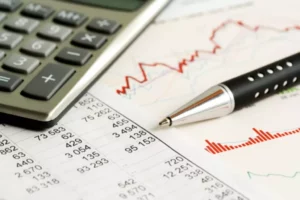A well-thought accounting system is vital to any business. That’s why it’s critical to understand all components of an accounting system. One of such components is the purchase ledger.
We have prepared an article for our readers to disclose the purchase ledger information. You can learn more about purchase ledger components and how to balance funds on the control and creditor accounts.
What Is A Purchase Ledger?
A purchase ledger is where accountants record all financial transactions related to the purchase of goods or services by a business during a specific period. This ledger shows the list of purchases the business has already paid to the supplier or the amount due to this supplier.
The balance on the purchase ledger control account is the trade creditor control account. This account should equal the balance on the available individual supplier accounts.
Contents of a Purchase Ledger
Typically, if an accountant is maintaining a manual record of the purchase ledger, it contains several components, such as:
- the purchase date information;
- the supplier name or code;
- the supplier invoice number;
- the purchase order number;
- ID code for purchased items;
- the amount paid;
- sales tax;
- payment information — whether the payment is covered or not yet.
So, the primary document an accountant records in the purchase ledger is the supplier invoice. Suppose suppliers provide a credit back to the company for such items as returned goods or items damaged during delivery. In that case, accountants also have to include credit memos issued by suppliers in the ledger.
A credit memo could also mean a volume discount. Although this credit could be related to several purchases in aggregate, so it can’t be traced back to an individual transaction.
Control Account Purchase Ledger and Its Purpose
A control account is used to eliminate the risk of errors in different purchase ledgers. The control account ensures any sub-ledgers are synchronized with the general one.
Accounting experts recommend reconciling the purchase ledger control account monthly to ensure it reflects the same balance as the creditor account. The creditor account reflects the individual balances outstanding to the company’s suppliers.
Control Account And Accounting
In accounting, there is a term that describes the purchase of balancing the control account with purchase ledgers — reconciliation. This process requires experience and skills since the accountant must understand how to conduct a thorough investigation of the different amounts.
The process is tedious since the accountant must conduct a thorough calculation to ensure that totals on different accounts are matched. However, it isn’t easy to perform this procedure manually. Companies may consider using accounting software to perform reconciliation, although they still need the services of accountants.
The most advanced accounting programs include the feature that enables the creation and management of the purchase ledger control account and the trader creditor control account.
This software typically allows performing simple reconciliation monthly. The best accounting apps provide businesses with the double-entry bookkeeping method. It means that whenever an accountant makes a change in a ledger, it is synchronized with the supplier’s account.
How To Balance Purchase Ledger?
In accounting, it’s critical to balance the purchase ledger control account with the creditor’s account. Any error when recording purchases may lead to overstatement or understatement in the balances of different accounts.
Accountants may check the figure with their records of unpaid invoices and thus, detect any errors. If the purchase ledger control account isn’t balanced with the creditor’s account, here’s what an accountant should check:
- Cashbook payments. These payments must only relate to invoiced expenses. They shouldn’t include wages, interest, etc. Delete them from the control account.
- Creditors list. The accountant must check whether they included all creditors. Pay attention to partly paid or outstanding from the period’s beginning. Check invoices covered right upon period’s closing since they might not be present in the same cash book.
- Credit notes. The total invoices must include credit notes in the credit section of the account.
- Discounts. The control account must include details about discounted purchases.
- Purchases are not in the cash book. If a company makes such purchases, the accountant should add them to the control account.
One or several of these errors in the entry lead to different balances in the control and creditor’s account. Examine invoices, payments and creditor accounts for potential duplications since they also lead to differences in accounts.


















